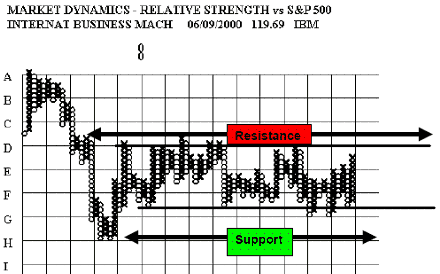
A study of the distribution of the returns from common stocks suggests that most stocks are in a trading range most of the time (i.e. 20% in the negative tail, 20% in the positive tail and 60% in the narrow middle of the distribution)
The trending stocks are in the two tails and the balance is moving back and forth with the market. In the absence of an upside breakout the shares of most major, mature companies should be sold as they approach the high end of the historic trading range. This is also a good reason why the relative strength point and figure charts need to be long-term in perspective. Trading ranges are very common on the relative strength point and figure
charts.
By W. Clay Allen CFA
Next: Resistance below the bearish resistance line
Summary: Index